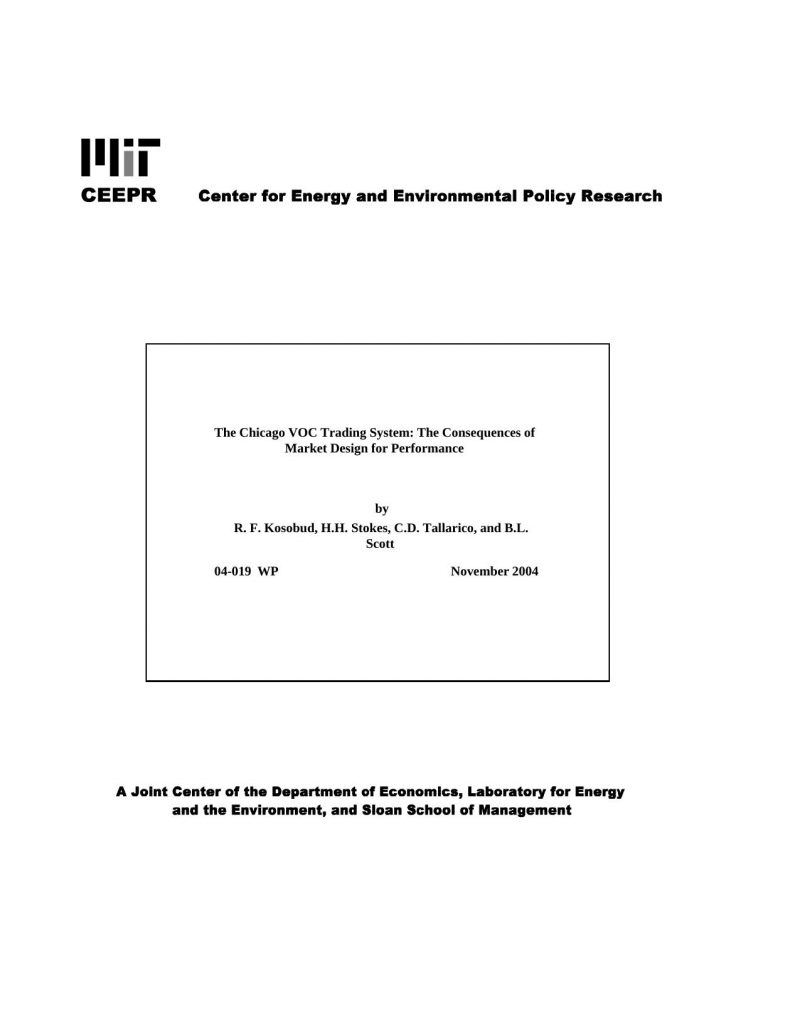The Chicago VOC Trading System: The Consequences of Market Design for Performance
R.F. Kosobud, H.H. Stokes, C.D. Tallarico, and B.L. Scott
04-Nov
The Chicago cap-and-trade approach to regulating stationary source VOC emissions in the Chicago ozone non-attainment area is a pioneering program that could set a precedent for other urban areas troubled by high ozone concentrations. It holds out the promise of cost-effectiveness, innovation stimulation, and flexibility compared with traditional regulation. To appraise this program design and evaluate these objectives, this study analyzes four years of data since the inception of the program in 2000. The data reveal that while emissions are far below the cap, there are unexpectedly large banks, startling expirations, and low prices of tradable permits, all inconsistent with an effective market. We find that the market as designed has been constrained from reaching its objectives by the continuance and extension of an underlying layer of traditional regulation, and to a lesser extent by over-allotment of tradable permits. That is, traditional regulation and over-allotment, combined with a market design calling for a small reduction in emissions from baseline and a one-year limit on banking, explain the incongruous outcomes recorded in the market. This study explores the evolution of this particular market design and presents statistical evidence in support of the hypothesis that the performance of a cap-and-trade market is very sensitive to design features when combined with other regulatory measures. The study concludes that the market as presently designed falls far short of achieving cost effectiveness, innovation stimulation, and flexibility. The policy recommendations include that the cap be significantly tightened, perhaps in a series of steps, and the banking horizon be extended to three years or more. Such redesign should enable the cap-and-trade approach to assume its proper role in helping to achieve the new eight-hour standard for ozone concentrations.



